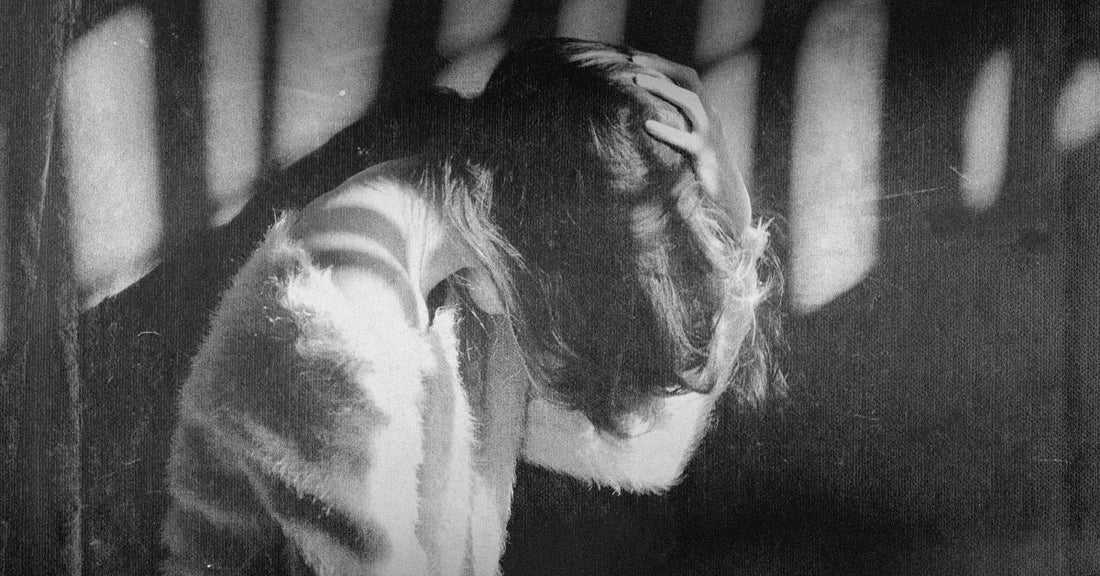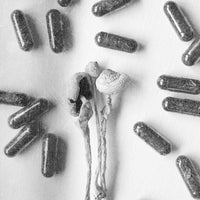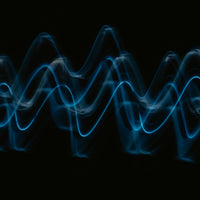During the thick of the pandemic, back in the summer of 2020, I soared over fishing villages along the coast of Norway and floated beside Bixby Bridge in Big Sur. I bathed in the mist that clings to the Scottish Highlands and sped down the face of a rushing waterfall on Oahu. I flowed in and out with the tide on the beaches of Mallorca.
And I did it all from a squeaky pleather recliner in a doctor’s office.
It’s amazing how real it felt with ketamine coursing through my veins.
“Is this video as cool to you as it is to me?” I asked the doctor a few moments into my first infusion, that July.
“Um, no,” he said, chuckling.
The drug rose in my bloodstream as the minutes passed, and soon I was no longer watching a video about Norway on a flatscreen TV. I was airborne, rising up out of my body. The whirs and chirps of the medical machinery faded into a distant soundscape. I registered the faint, periodic moan of the blood-pressure cuff as it clenched around an arm I could no longer feel. I left the dimly lit doctor’s office—forgot about it entirely—and was gliding over a windswept coastline. “Whee!” I squealed, leaving behind the version of myself that was a 33-year-old mom.
The dose ticked higher until I could no longer take in what the TV was offering. My eyes closed and I spiraled inward, down what’s known as the “k hole.” It appeared as a glowing golden fabric—an endless sea of microscopic threads being stitched together.
“Is the ketamine still comfortable?” I heard a faraway voice ask.
My response came in a comically slow drawl: “I feeeeeel liiiiike uhhh Haaawaii naaapkin.”
“Well,” the doctor said, “I’ve never heard that one before.”
Looking for Hope Down a K Hole
Until recently, ketamine was known in the medical world as a hospital anesthetic and to the general public as a party drug (the “Special K” I heard rumors of as a teen in the early aughts). It’s been reborn in recent years as a treatment for severe anxiety, depression, PTSD and, to a lesser degree, chronic pain. It’s a promising treatment in a slightly sloppy wild-West-style boom, with hundreds of ketamine clinics of varying quality now open across the U.S. But its steep cost (many hundreds, or even thousands, of dollars per infusion) and intense nature mostly relegates it to patients who have exhausted all other options.
Desperate people. People like me.
When dawn broke on 2020, I’d had chronic migraine for more than a decade and was averaging 28 days of headaches each month. They had started as an occasional visitor when I was a junior in college but soon morphed into a permanent, unwelcome house guest in the right side of my head. The pain began with a nagging pressure at the base of my skull, traced upward to where it felt as if an ax was lodged in the back of my head, wrapped around to a throbbing temple and finished with a stabbing sensation above my eye.
Most days, I did my best to parent, work and act like a human despite it all. I stumbled through a world full of grating noises and too-bright lights, dodging triggering smells and foods like a weary soldier stepping over endless landmines. My left side tingled. My vision blurred. My head was so tender that it hurt to rest it on a pillow at night. My temple burned so hotly that it melted ice packs in a matter of minutes.
This was my baseline state, and I pushed through it whenever I could.
But sometimes I couldn’t. On those days, I would lay in bed with the curtains drawn and could hardly lift my phone to cancel whatever plans I had. My husband, Josh, fretted over me, handing me my medication with a glass of water and bringing fresh ice for the pack I wore on my head.
As soon as she could talk, our daughter would pop into the room and ask, “You head is hurtin’ mama? I kiss it?” before Josh would shoo her out. I’d let her peck my temple before she went, imagining that all the healing I needed was in that one tiny kiss. “C’mon bubba, mama isn’t feeling good. She needs to rest,” I’d hear Josh say as the door closed.
I spent those days alone in the dark and quiet, with just my agony to keep me company.
I wasn’t living my own life. It was right there in front me—my vivacious 2-year-old, blooming by the day, my husband patiently waiting for the real me to show up again, my career, begging for some TLC—but it felt just beyond my reach. It was all I could do to cling to a shred of hope that something, someday would help.
But that hope had grown dim by the start of 2020. By then I’d tried elimination diets and special diets. An army of supplements in every imaginable formulation. Steroid injections that numbed me and pills that made me shake and vomit. Physical therapy, chiropractic, acupuncture, reiki and herbs. It seemed as if I’d tried everything short of an exorcism—though I sometimes joked about wanting to try that, too.
Then, just as I wrapped up nine months of Botox procedures (36 pokes into the back of my skull to attack the nerve centers, not, unfortunately, the multiplying wrinkles on the other side of my head) that didn’t budge my unrelenting pain, I learned that a friend’s lifelong migraines had been cured after just three ketamine sessions.
Just. Three. Sessions. Then … freedom.
I knew it could load us with debt and that there was no guarantee it would help, but I was willing to try almost anything at that point. “Whatever it costs, it’ll be worth it,” Josh assured me. “We have to keep trying.”
A few weeks later, I called a well-reviewed ketamine clinic in my town helmed by a former military doctor. I sat on a waitlist for four months before having a phone consultation with him. (I later learned that he routinely raises his prices in hopes that it will shorten that line. It hasn’t worked. The queue remains months long.)
He heard my case and explained that ketamine can reduce migraines because of how it works in the brain: The drug blocks a certain neurotransmitter from docking in a pain receptor, preventing that receptor from sending pain signals. This is helpful because chronic migraine is essentially the brain going haywire with pain signals. The doctor couldn’t guarantee that ketamine would cure me of migraines, but he promised it would help.
 Read more: Healing with Psilocybin
Read more: Healing with Psilocybin
Ketamine, Revisited
I got mixed reactions when I told people about my new treatment. My no-nonsense German neurologist raised his eyebrows and said some version of “good luck with that.” My parents, whose last tango with hallucinogens was when Nixon was throwing peace signs, were cautiously supportive. “Ketamine!” exclaimed my neighbor, an ICU nurse, from across the fence that separates our yards. “That’s what we give crazy people!” I flinched.
One friend was baffled (“You’re on Special K!?”) while two others, upon hearing my news, exclaimed, “I love ketamine. Enjoy!”
When did people start loving ketamine? I wondered. Did I miss the memo?
Because, the truth was, I had some emotional baggage to resolve before my first appointment. My one and only brush with ketamine had been as a college senior doing a semester abroad in London. A unicyclist I was dating (I was 20, let’s remember) ventured out to buy weed and came home with ketamine. He cut lines of white powder the size of butter knives on his coffee table while a group of us—all naive to the drug’s dosing and effects—gathered around to partake. Let's just say, by the end of a nightmarish trip during which I sank through the floor and spiraled through what my mind perceived as hell, our host was the only one who remained semi-conscious. I was eventually carried down four flights of stairs to my basement flat, where I awoke drenched in my own vomit.
I laughed it off the next day, not realizing—or, at least, not admitting—that it had been one of the scariest experiences of my life. Thirteen years later, as my first ketamine treatment neared, I knew I needed to find peace with that memory before I could let the drug into my system as a healing medicine. I started by calling an old friend and, for the first time ever, talking through that London night honestly and in detail. Then I faced it solo, lying in bed with my eyes closed. I allowed myself to be overcome with the memory’s fear and discomfort. My chest tightened and my cheeks burned. I stayed with it until I felt something shift—a gentle plink! near my heart. And, in that moment, I forgave myself for the carelessness, for the embarrassment.
Then I did something that would’ve shocked my 20-year-old self beyond belief: Not only did I plan to revisit this old acquaintance I’d sworn off, I decided to bring my mom along for the ride. I was nervous—all too aware of how a ketamine trip can turn sour. But as the day neared, it was mostly eager anticipation that I felt, a familiar surge of cautious optimism that would swell in my heart every time I began a new migraine treatment. It’s the feeling that comes with thinking, “This could be it—this could be what makes me better!”
The Set and Setting—Or Lack Thereof
The doctor was overly chatty but kind. He was an anesthesiologist, which meant he was excellent at slipping a needle into the blue vein that snakes across the back of my hand, but lousy when it came to set and setting. The extent of it was stationing me in an armchair, my feet propped up on a footrest, and streaming drone footage of pretty places. Sometimes the internet would glitch, or the Youtube video would end, and I’d spiral into an almost painful state of confusion while the doctor fumbled to figure it out.
At the time, I was oblivious to the debate germinating in the ketamine field over whether it is even ethical for non-mental-health professionals to provide these treatments. The argument makes sense, considering most people seek out ketamine to treat sensitive conditions like suicidality and PTSD.
It soon became clear to me that a clinic would benefit from having both a medical doctor and a psychiatrist involved. One to oversee needles and vitals, the other to help patients integrate their experiences once they land back on Earth.
Though my doctor sat patiently with me throughout each infusion and for quite a while afterward, his efforts to engage often missed the mark. Once, while I reentered my body, he talked at length about his harrowing experience on Sept. 11, 2001. (For the record, topics not to discuss while someone is coming down from a psychedelic trip: Terrorism. Your own traumatic memories. War. Politics.)
I had to remind myself that, in his own way, the doctor was still learning to navigate this new world of ketamine, too.
 Read more: MUD\WTR’s Official Stance on Psychedelics
Read more: MUD\WTR’s Official Stance on Psychedelics
Take the Pain Away
When that first infusion was over and I had descended back into my body, I attempted to describe what had occurred but I was too groggy to talk much. I felt the memory of the vivid world I’d visited slip away like a dream upon waking. All I was able to say aloud was that I had left my body; what I couldn’t articulate was how freeing it was to have temporarily shed that prison of perpetual stabs, aches and throbs.
But the doctor knew what I meant. “Yeah,” he said, “it’s like the soul gets a vacation from the body.”
I did six treatments in quick succession and followed up with monthly sessions for a while longer. My mom, bless her, accompanied me to all but one. Dissociating is odd enough, and it was made even more surreal by having my 69-year-old mother seated to one side and a doctor to the other—not to mention COVID-19 plaguing the world around us.
Sometimes, during an infusion, my eyes would open a crack and I’d notice grey sneakers propped up on a footrest in front of me. Confused, I’d eventually clock them as belonging to me. This yanked me back from the realm where I’d transcended my physical self, my pain, my exhaustion. The thought “I have feet” became “I’m in a doctor’s office” became “I’m here because I have migraines.”
To momentarily forget my condition and learn it anew was crushing every time it happened.
Chronic illness and the pandemic felt similar in that way: I got used to really awful things being normal. Having an hour without pain was like that feeling, early in lockdown, of waking up in a good mood before a sinking sensation in my gut reminded me about quarantine and death rates. There was heartbreak in remembering.
On more than one occasion, as the medication wore off and I began to wiggle my toes and warm up to my body again, I noticed that my cheeks and face mask were damp. While I’d been off swirling through the outer reaches of consciousness, my body had cried.
Sometimes, the trips threatened to head south. Like once, when my eyes fluttered open and I saw a fun-house version of the doctor’s office in which everything, myself included, was upside down, dangling from the ceiling.
For the most pleasant time, I learned to let myself get washed downstream. The k hole was not a smooth, soft world for me, but an expanse of jutting ridges and steep ravines. It was like the undulating bark of a redwood tree: layers that rise and fall in scalloped seams, revealing an ancient core beneath. It sounds wacky, I know, and that’s because it is. It’s ineffable and bonkers and probably futile to attempt to explain. (Yet here I am.)
In most sessions, I wound up circling closer and closer to a golden light—what I understood to be the source of everything. As I approached, I heard an echoing chorus of women’s voices chanting, “the Mother, the Mother, the Mother.”
It took half a dozen infusions for me to realize that this might be what other people call God.
I rarely said anything during the treatments, being too far removed from something as mechanical as a throat or a tongue. But my mom jotted down anything I did say. In one of my last infusions, after half an hour of silence, I whispered four words: “Take the pain away.”
I’d come to this clinic in hopes that ketamine would perform a magic trick in my neurodivergent brain and I’d exit rewired and migraine free. That didn’t happen. But I did get to touch God, to merge with her golden light, and politely ask that she help me.
A More Hopeful Place
After the 10th session, my doctor and I agreed that I’d most likely maxed out whatever benefit I was getting from the ketamine. Plus, there’s a notable lack of long-term safety and efficacy data for the drug, and I’d just put a hell of a lot of it in my system in four months’ time.
It was nearly 2021. Another year of migraines come and gone. Another year of trying something new that didn’t completely cure me. And yet, I wasn’t disappointed. The ketamine had helped in a subtle way. My triggers were less drastic, my head clearer. Managing the pain felt more doable. I was less overwhelmed by it all.
A soul-crushing migraine overcame me suddenly that New Year’s Eve. I took meds and shivered uncontrollably and assumed the fetal position. My daughter, who was now nearing her third birthday, held my hand and cried and said I wasn’t very fun when I was sad. She kissed my forehead. I could have cried myself, for so many reasons, if I wasn’t so incapacitated.
It turned out to be a brutal send-off: Though I still grapple with daily low-grade headaches, I haven’t had a bad migraine since.
I found out I was pregnant a few weeks later. And while I can’t honestly say whether the reason for this improvement was the ketamine, or my second pregnancy, or the mercy of the fates, my life has returned, my self has returned, in a way I was worried it never would.
And, on that note, I must now go knock on some wood.
Elizabeth Limbach is MUD\WTR’s managing editor.
Header image by Caroline Heza via Unsplash.
Read more: Rethinking the Road to Recovery
Read more: Why MUD\WTR Supports Microdosing at Work
Read more: Healing Traumatic Brain Injuries with Psychedelics




